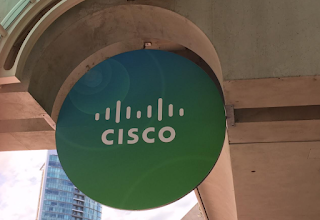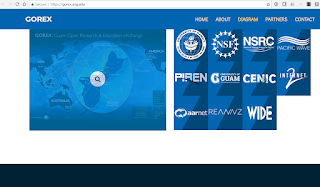Verizon is currently carrying customer traffic on part of its transport network using a new highly scalable circuit emulation solution from Cisco that supports speeds up to OC-192. Previous circuit emulation equipment carried speeds up to OC-12.
Circuit emulation enables transport of conventional digital and optical signal rates over a packet-based MPLS network without impacting customer traffic -- creating a smooth migration of legacy services to next-generation infrastructure and improving overall reliability.
As part of its next-generation 100G U.S. metro network rollout, Verizon initially deployed this technology where it could aggregate multiple Ethernet and TDM circuits at the same location onto a unified high-speed circuit.
“This is a true architectural collaboration with Verizon. We have worked hard to deliver this unique solution that will easily enable the growth of Ethernet services while improving the reliability of mission critical TDM private line services,” said Bill Gartner, vice president, optical systems and optics, Service Provider Business, Cisco.
Circuit emulation enables transport of conventional digital and optical signal rates over a packet-based MPLS network without impacting customer traffic -- creating a smooth migration of legacy services to next-generation infrastructure and improving overall reliability.
As part of its next-generation 100G U.S. metro network rollout, Verizon initially deployed this technology where it could aggregate multiple Ethernet and TDM circuits at the same location onto a unified high-speed circuit.
“This is a true architectural collaboration with Verizon. We have worked hard to deliver this unique solution that will easily enable the growth of Ethernet services while improving the reliability of mission critical TDM private line services,” said Bill Gartner, vice president, optical systems and optics, Service Provider Business, Cisco.
Verizon Picks Cisco and Ciena for Advanced 100G Metro Network
Verizon has selected Ciena and Cisco as vendors for its next generation metro optical network.
 Specifically, Verizon will test and deploy Ciena’s metro-optimized 6500 packet optical technology and the Cisco Network Convergence System on portions of its 100G metro network this year, with plans to turn up live traffic in 2016. Supplier volumes will be guided by ongoing testing, support and performance.
Specifically, Verizon will test and deploy Ciena’s metro-optimized 6500 packet optical technology and the Cisco Network Convergence System on portions of its 100G metro network this year, with plans to turn up live traffic in 2016. Supplier volumes will be guided by ongoing testing, support and performance.
 “Deploying a new coherent, optimized and highly scalable metro network means Verizon stays ahead of the growth trajectory while providing an even more robust network infrastructure for future demand,” said Lee Hicks, vice president of Verizon network planning. “Ciena and Cisco met not only our technology requirements but the aggressive timeline to deploy our next-generation 100G-and-above metro network.”
“Deploying a new coherent, optimized and highly scalable metro network means Verizon stays ahead of the growth trajectory while providing an even more robust network infrastructure for future demand,” said Lee Hicks, vice president of Verizon network planning. “Ciena and Cisco met not only our technology requirements but the aggressive timeline to deploy our next-generation 100G-and-above metro network.”
 Specifically, Verizon will test and deploy Ciena’s metro-optimized 6500 packet optical technology and the Cisco Network Convergence System on portions of its 100G metro network this year, with plans to turn up live traffic in 2016. Supplier volumes will be guided by ongoing testing, support and performance.
Specifically, Verizon will test and deploy Ciena’s metro-optimized 6500 packet optical technology and the Cisco Network Convergence System on portions of its 100G metro network this year, with plans to turn up live traffic in 2016. Supplier volumes will be guided by ongoing testing, support and performance. “Deploying a new coherent, optimized and highly scalable metro network means Verizon stays ahead of the growth trajectory while providing an even more robust network infrastructure for future demand,” said Lee Hicks, vice president of Verizon network planning. “Ciena and Cisco met not only our technology requirements but the aggressive timeline to deploy our next-generation 100G-and-above metro network.”
“Deploying a new coherent, optimized and highly scalable metro network means Verizon stays ahead of the growth trajectory while providing an even more robust network infrastructure for future demand,” said Lee Hicks, vice president of Verizon network planning. “Ciena and Cisco met not only our technology requirements but the aggressive timeline to deploy our next-generation 100G-and-above metro network.”
















